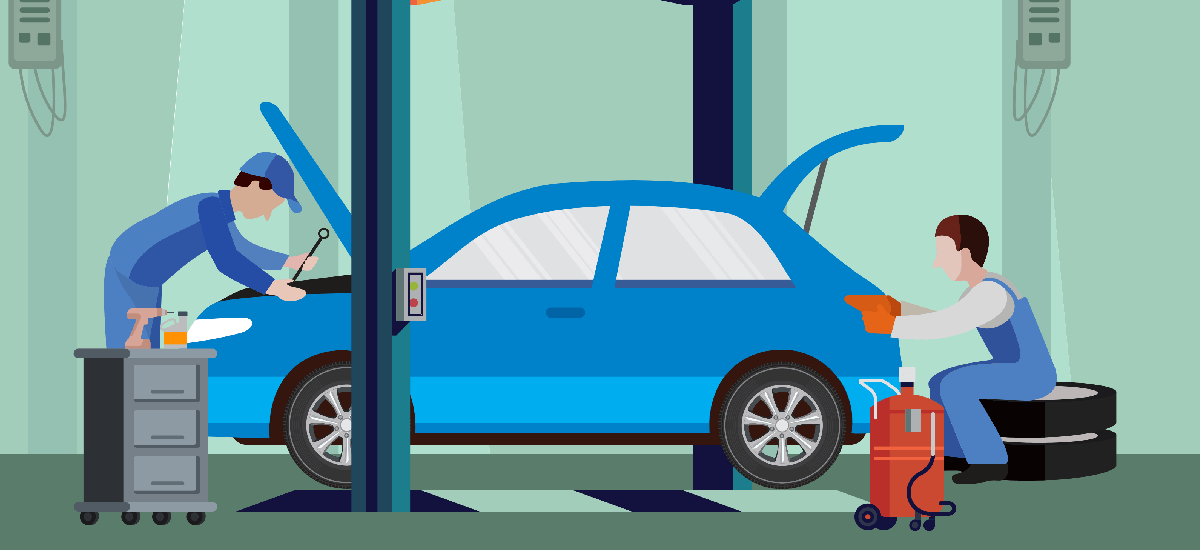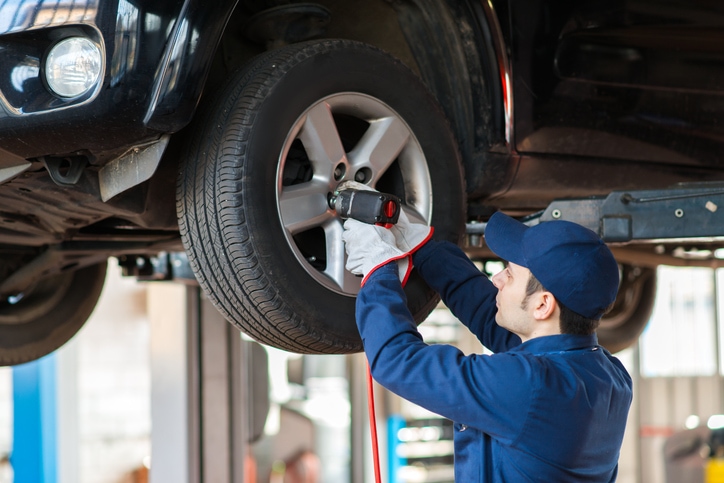All Categories
Featured
When your automobile begins to get too hot, it can be a frightening and difficult scenario. Nonetheless, comprehending just how to react in these minutes and taking actions to avoid future getting too hot can help secure your vehicle and stay clear of pricey repairs. If your vehicle overheats and just how to stop it from occurring again., here's what to do.
If Your Automobile Overheats,What to Do. Draw Over and Shut Off the Engine The initial point you need to do if your vehicle begins to get too hot is to pull over to a risk-free location, such as a parking area or the shoulder of the road. Shut off the engine right away to avoid more damage. Running an overheated engine can create permanent damages to the interior elements, including the radiator and cylinder heads.
Permit the Engine to Cool After transforming off the engine, provide it time to cool. Opening the hood can assist launch warmth, however be cautious as the engine and bordering locations may still be incredibly hot. Wait at the very least 15-20 mins prior to trying any kind of additional actions.
Inspect the Coolant Level Once the engine has cooled down, inspect the coolant level. Never ever open up the radiator cap while the engine is warm, as this might trigger hot coolant to spray and shed you.
Inspect for Leakages or Damaged Pipes While you are examining the coolant degree, look for any visible leaks or damaged pipes under the hood. Split or broken hoses can create coolant to leak out, leading to a getting too hot engine. If you find any concerns, you might need to ask for roadside support or a tow to get the cars and truck to a mechanic.
Require Assistance If you can't determine the cause of the concern or the getting too hot continues after rounding off the coolant, it's finest to require roadside help. Driving with an overheated engine can cause extreme damages to your car and leave you stranded.
![]()
Just How to stop Your Vehicle from Getting too hot. Inspect Coolant Levels Regularly Among the primary root causes of getting too hot is low coolant levels. If required, make it a behavior to examine your coolant levels routinely and cover them off. Describe your vehicle's manual for the suggested coolant combination and upkeep periods.
Check Your Radiator Your radiator plays a vital duty in maintaining the engine cool. Make certain there are no clogs or particles obstructing air movement via the radiator. If your radiator is obstructed or harmed, it might not operate correctly, causing overheating.
Maintain Your Cooling System The cooling system needs to be flushed and replenished regularly. With time, coolant can end up being infected or shed its effectiveness. Adhere to the manufacturer's referrals for flushing the system, usually every 30,000 to 50,000 miles.
Screen the Thermostat and Water Pump The thermostat manages the temperature level of the engine, while the water pump circulates coolant via the engine. It can create the engine to overheat if either of these parts stops working. Have your mechanic inspect the thermostat and water pump throughout routine maintenance.
Stay Clear Of Straining the Lorry Overloading your lorry, especially on warm days or lengthy trips, can strain the engine and the cooling system. Bear in mind your automobile's weight limitations and try to prevent carrying heavy lots, specifically when driving in extreme temperatures.
Drive with Treatment Aggressive driving, such as speeding or rapid velocity, can boost engine stress and anxiety and warm production. Decrease, particularly on hot days or when driving up steep inclines, to minimize the threat of overheating.
![]()
Conclusion. If your automobile gets too hot can prevent additional damages to your engine and aid you manage the circumstance safely, understanding what to do. By consistently checking your coolant degrees, examining the radiator and hoses, and keeping the cooling system, you can minimize the risk of getting too hot. With proactive treatment and appropriate maintenance, your automobile will certainly remain in good condition, guaranteeing you stay safe and avoid costly fixings down the roadway.
If Your Automobile Overheats,What to Do. Draw Over and Shut Off the Engine The initial point you need to do if your vehicle begins to get too hot is to pull over to a risk-free location, such as a parking area or the shoulder of the road. Shut off the engine right away to avoid more damage. Running an overheated engine can create permanent damages to the interior elements, including the radiator and cylinder heads.
Permit the Engine to Cool After transforming off the engine, provide it time to cool. Opening the hood can assist launch warmth, however be cautious as the engine and bordering locations may still be incredibly hot. Wait at the very least 15-20 mins prior to trying any kind of additional actions.
Inspect the Coolant Level Once the engine has cooled down, inspect the coolant level. Never ever open up the radiator cap while the engine is warm, as this might trigger hot coolant to spray and shed you.
Inspect for Leakages or Damaged Pipes While you are examining the coolant degree, look for any visible leaks or damaged pipes under the hood. Split or broken hoses can create coolant to leak out, leading to a getting too hot engine. If you find any concerns, you might need to ask for roadside support or a tow to get the cars and truck to a mechanic.
Require Assistance If you can't determine the cause of the concern or the getting too hot continues after rounding off the coolant, it's finest to require roadside help. Driving with an overheated engine can cause extreme damages to your car and leave you stranded.

Just How to stop Your Vehicle from Getting too hot. Inspect Coolant Levels Regularly Among the primary root causes of getting too hot is low coolant levels. If required, make it a behavior to examine your coolant levels routinely and cover them off. Describe your vehicle's manual for the suggested coolant combination and upkeep periods.
Check Your Radiator Your radiator plays a vital duty in maintaining the engine cool. Make certain there are no clogs or particles obstructing air movement via the radiator. If your radiator is obstructed or harmed, it might not operate correctly, causing overheating.
Maintain Your Cooling System The cooling system needs to be flushed and replenished regularly. With time, coolant can end up being infected or shed its effectiveness. Adhere to the manufacturer's referrals for flushing the system, usually every 30,000 to 50,000 miles.
Screen the Thermostat and Water Pump The thermostat manages the temperature level of the engine, while the water pump circulates coolant via the engine. It can create the engine to overheat if either of these parts stops working. Have your mechanic inspect the thermostat and water pump throughout routine maintenance.
Stay Clear Of Straining the Lorry Overloading your lorry, especially on warm days or lengthy trips, can strain the engine and the cooling system. Bear in mind your automobile's weight limitations and try to prevent carrying heavy lots, specifically when driving in extreme temperatures.
Drive with Treatment Aggressive driving, such as speeding or rapid velocity, can boost engine stress and anxiety and warm production. Decrease, particularly on hot days or when driving up steep inclines, to minimize the threat of overheating.

Conclusion. If your automobile gets too hot can prevent additional damages to your engine and aid you manage the circumstance safely, understanding what to do. By consistently checking your coolant degrees, examining the radiator and hoses, and keeping the cooling system, you can minimize the risk of getting too hot. With proactive treatment and appropriate maintenance, your automobile will certainly remain in good condition, guaranteeing you stay safe and avoid costly fixings down the roadway.
Latest Posts
Reputable Expenses Door Solutions for Houses and Organizations
Published May 23, 25
1 min read
Discover Oil Changes & More: Complete Auto Care Solutions from Montclare Auto Repair
Published May 23, 25
1 min read
How Regular Auto Maintenance at Montclare Auto Repair Reduces Costs
Published May 23, 25
1 min read
More
Latest Posts
Reputable Expenses Door Solutions for Houses and Organizations
Published May 23, 25
1 min read
Discover Oil Changes & More: Complete Auto Care Solutions from Montclare Auto Repair
Published May 23, 25
1 min read
How Regular Auto Maintenance at Montclare Auto Repair Reduces Costs
Published May 23, 25
1 min read